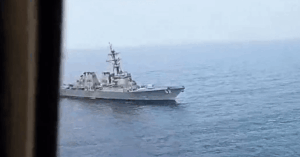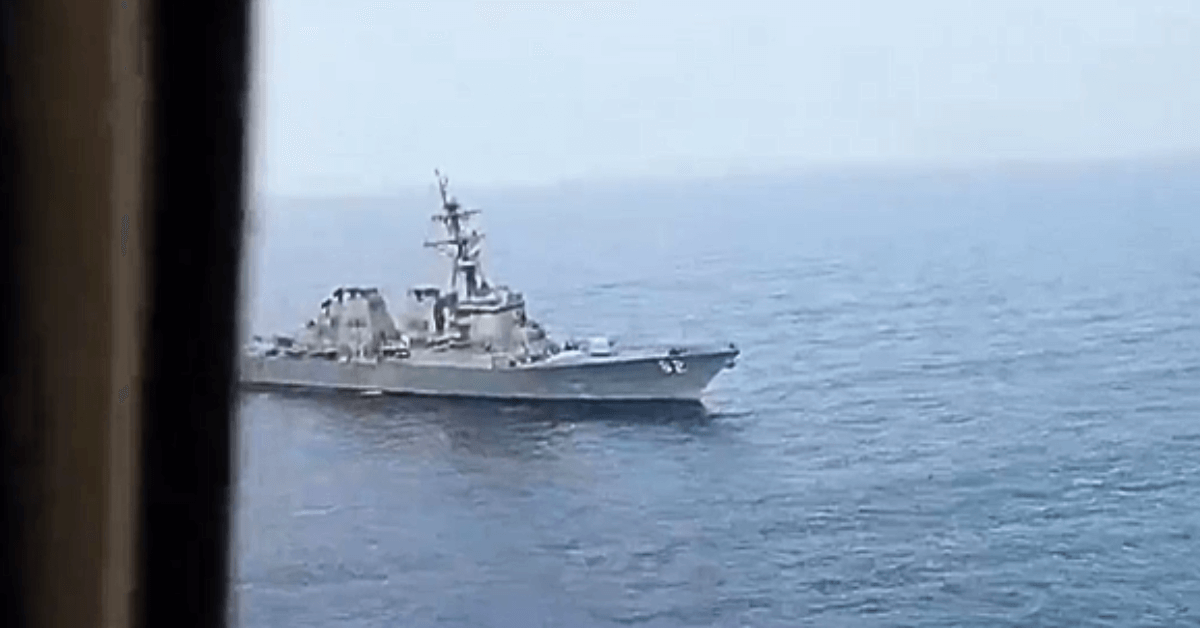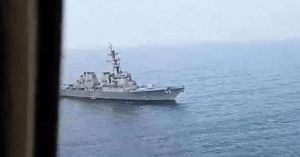
Foreign Ships Now Need Approval From Russia’s Top Security Agency To Enter Its Ports
July 24, 2025
Grimaldi Group Launches First Ammonia-Ready Car Carrier ‘Grande Shanghai’
July 24, 2025

Iran has claimed that its forces confronted a U.S. Navy destroyer near the Gulf of Oman and forced it to turn away after repeated warnings. The incident involved an Iranian military helicopter and the USS Fitzgerald, an Arleigh Burke-class guided missile destroyer.
According to Iranian state television, the USS Fitzgerald was moving close to waters monitored by Iran at around 10:00 a.m. local time (0630 GMT) when the country’s Third Naval Region dispatched an SH-3 “Sea King” military helicopter to intercept it.
Iranian media released visuals showing the helicopter flying close to the U.S. vessel. In the footage, a crew member is heard warning the U.S. destroyer to change course because it was approaching Iranian-controlled waters.
Iran’s state TV claimed the Fitzgerald tried to provoke Iran by nearing its territory. The helicopter reportedly flew over the destroyer and issued several radio warnings to steer clear of the area.
Iranian forces said the U.S. warship responded with threats, allegedly warning the Iranian helicopter to leave the vicinity. Despite the warning, Iranian sources reported that their pilot continued the mission and reiterated the demand for the destroyer to change its course southward. After multiple warnings, the Fitzgerald is said to have eventually turned away from the area.
An Iranian helicopter forced US destroyer DDG Fitzgerald to retreat from Iranian waters in the Sea of Oman — even after the warship threatened to shoot it down.
Follow: https://t.co/mLGcUTSA3Q pic.twitter.com/3ha2eXQVUA
— Press TV
(@PressTV) July 23, 2025
Meanwhile, the U.S. has dismissed these claims. A U.S. defense official, speaking to Reuters on condition of anonymity, confirmed the interaction but said it happened entirely in international waters.
The official described the encounter as “safe and professional” and said it had no impact on the Fitzgerald’s mission. The official also accused Iran’s Islamic Revolutionary Guard Corps (IRGC) of spreading misinformation through false reports.
The confrontation took place about a month after the U.S. carried out airstrikes on Iranian nuclear facilities during a 12-day war involving Israel. Washington claimed the facilities were part of a nuclear weapons development program. Tehran denied those claims and maintained that its nuclear program is only for civilian purposes.
After the June 22 strikes, Iran’s Foreign Minister Abbas Araghchi said the damage to the nuclear sites was “serious and severe,” but confirmed that Iran would continue its uranium enrichment program.
Iranian forces often patrol areas along the country’s southern coastline, including the Gulf of Oman and the Strait of Hormuz, where U.S. Navy warships frequently operate.
References: Reuters, The Hindu
Source: Maritime Shipping News


